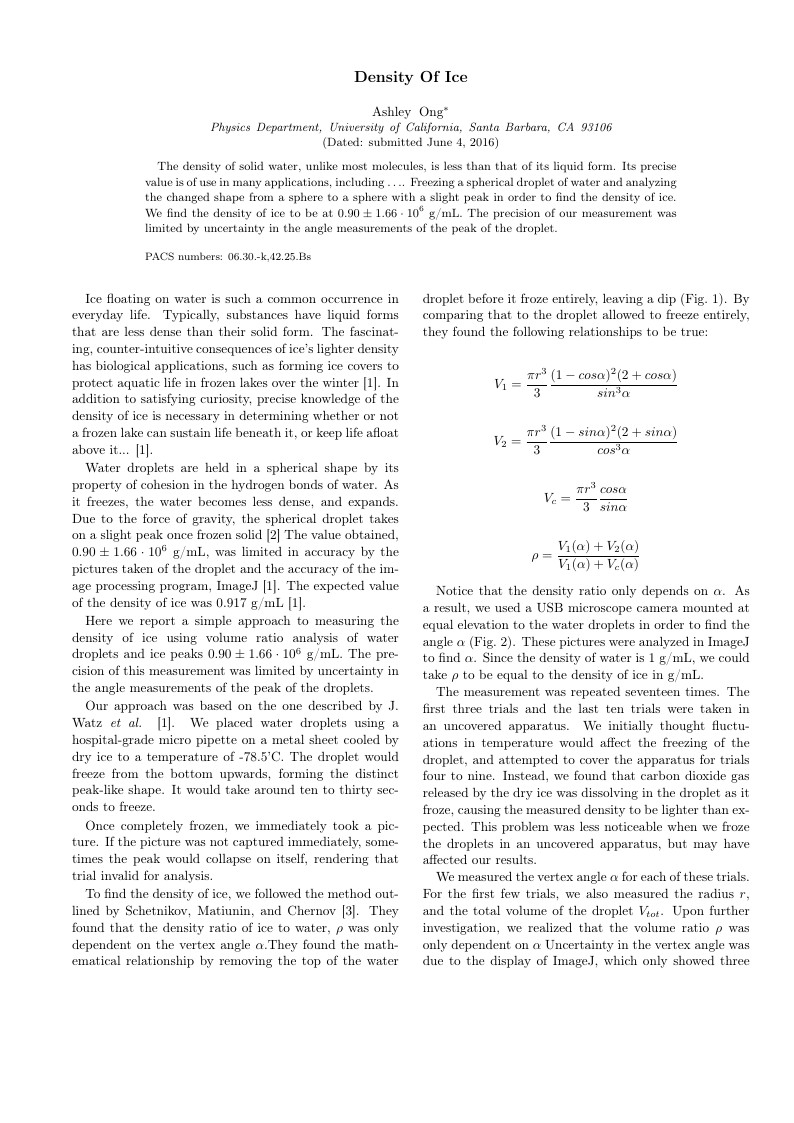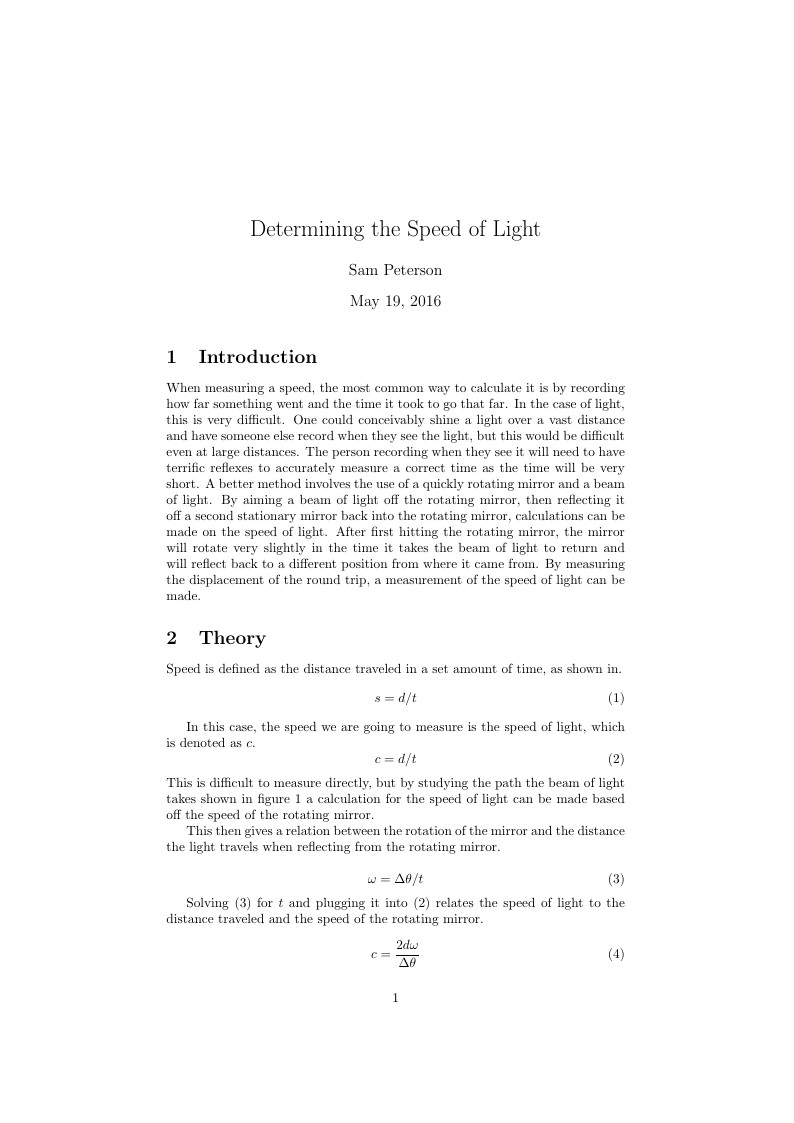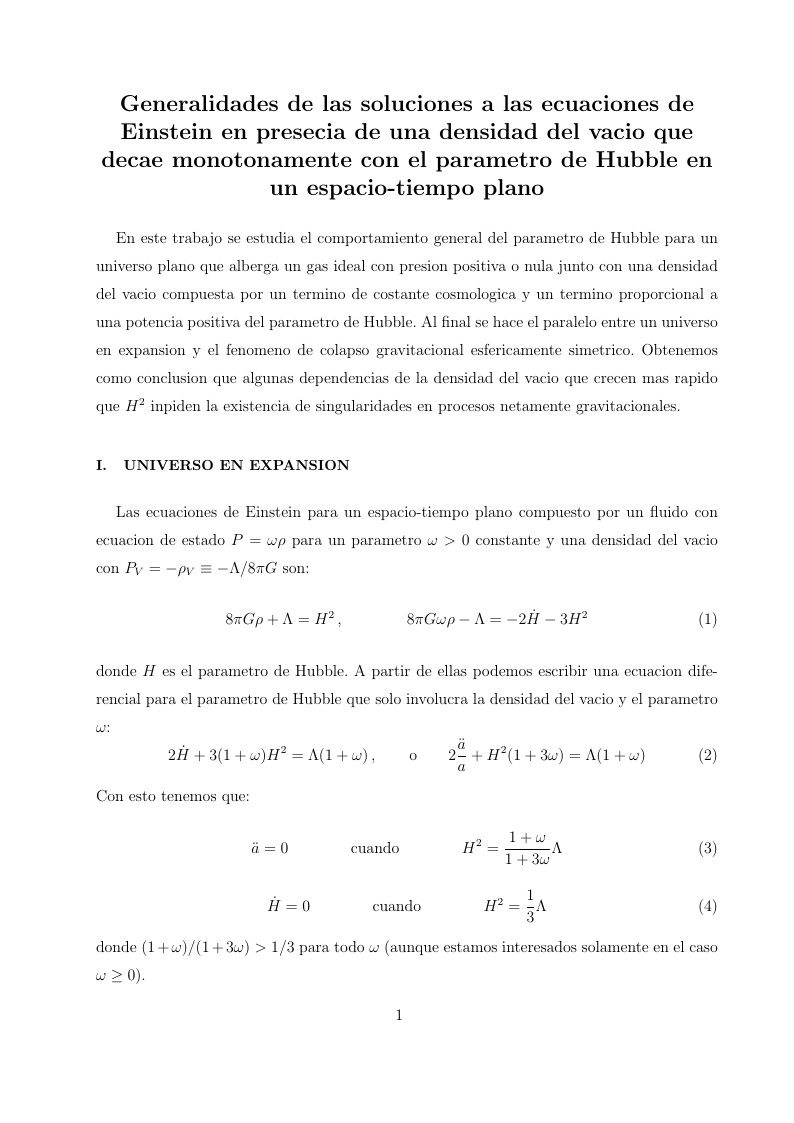最近的

The density of solid water, unlike most molecules, is less than that of its liquid form. Its precise value is of use in many applications. Freezing a spherical droplet of water and analyzing the changed shape from a sphere to a sphere with a slight peak in order to find the density of ice. We find the density of ice to be at 0.90 ± 1.66 · 106 g/mL. The precision of our measurement was limited by uncertainty in the angle measurements of the peak of the droplet.

When measuring a speed, the most common way to calculate it is by recording how far something went and the time it took to go that far. In the case of light, this is very difficult. One could conceivably shine a light over a vast distance and have someone else record when they see the light, but this would be difficult even at large distances. The person recording when they see it will need to have terrific reflexes to accurately measure a correct time as the time will be very short. A better method involves the use of a quickly rotating mirror and a beam of light. By aiming a beam of light o the rotating mirror, then reflecting it o a second stationary mirror back into the rotating mirror, calculations can be made on the speed of light. After first hitting the rotating mirror, the mirror will rotate very slightly in the time it takes the beam of light to return and will reflect back to a different position from where it came from. By measuring the displacement of the round trip, a measurement of the speed of light can be made.

The differential wave equation can be used to describe electromagnetic waves in a vacuum. In the one dimensional case, this takes the form $\frac{\partial^2\phi}{\partial x^2}-\frac{1}{c^2}\frac{\partial^2\phi}{\partial t^2} = 0$. A general function $f(x,t) = x \pm ct$ will propagate with speed c. To represent the properties of electromagnetic waves, however, the function $\phi(x,t) = \phi _0 sin(kx-\omega t)$ must be used. This gives the Electric and Magnetic field equations to be $E (z,t) = \hat{x} E _0 sin(kz-\omega t)$ and $B (z,t) = \hat{y} B _0 sin(kz-\omega t)$. Using this solution as well as Maxwell's equations the relation $\frac{E_0}{B_0} = c$ can be derived. In addition, the average rate of energy transfer can be found to be $\bar{S} = \frac{E_0 ^2}{2 c \mu _0} \hat{z}$ using the poynting vector of the fields.

Preinforme guia de laboratorio L4.

We present a geometric proof of the addition formulas for the hyperbolic sine and cosine functions, using elementary properties of linear transformations.

A detailed report of findings on the altitudes which can be reached by super pressure balloons and how various factors and considerations affect this. Superpressure balloons are deployed and researched by various organisations including NASA, to solve technical limitations such as cell tower coverage as well as advancing fields of research. Balloons are used in planetary exploration, and weather prediction to teaching primary school physics. The versatile yet simple aerostat has been a valuable tool in many areas of engineering and their altitude ceiling is of great scientific interest. To solve the problem without the ability to physically reproduce the scenario, required mathematical models to be created as a means of simulating the effects of real world physics. A degree great enough to output an accurate and hence useful result without becoming too complex to be computable is the fine balance attempted to be created by this paper.

1509평가원B30

En este trabajo se estudia el comportamiento general del parametro de Hubble para un universo plano que alberga un gas ideal con presion positiva o nula junto con una densidad del vacio compuesta por un termino de costante cosmologica y un termino proporcional a una potencia positiva del parametro de Hubble. Al final se hace el paralelo entre un universo en expansion y el fenomeno de colapso gravitacional esfericamente simetrico. Obtenemos como conclusion que algunas dependencias de la densidad del vacio que crecen mas rapido que H2 inpiden la existencia de singularidades en procesos netamente gravitacionales.
